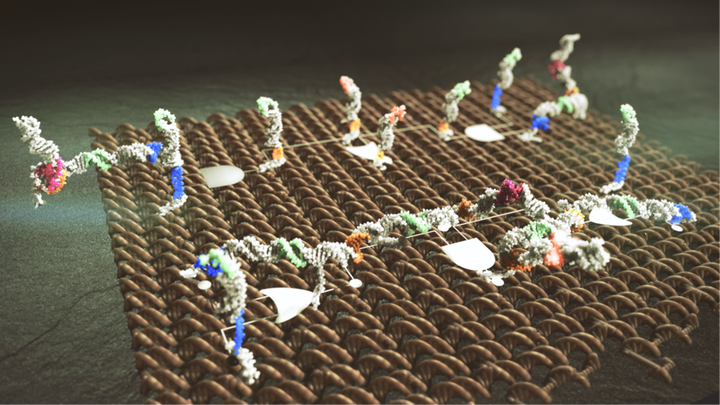
Abstract
Cells use spatial constraints to control and accelerate the flow of information in enzyme cascades and signaling networks. Here we show that spatial organization can be a similarly powerful design principle for overcoming limitations of speed and modularity in engineered molecular circuits. We create logic gates and signal transmission lines by spatially arranging reactive DNA hairpins on a DNA origami. Signal propagation is demonstrated across transmission lines of different lengths and orientations, and logic gates are modularly combined into circuits that establish the universality of our approach. Because reactions preferentially occur between neighbors, identical DNA hairpins can be reused across circuits. Co-localization of circuit elements decreases computation time from hours to minutes compared to circuits with diffusible components. Detailed computational models enable predictive circuit design. We anticipate that our approach will motivate the use of spatial constraints in molecular engineering more broadly, bringing embedded molecular control circuits closer to applications.